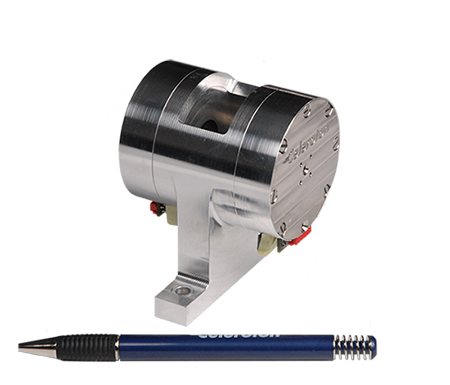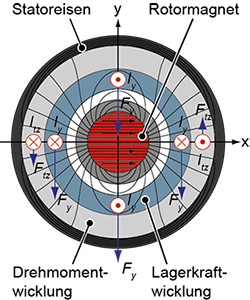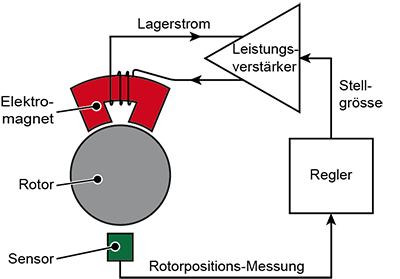Operating principle of the magnetic bearing motor
Most magnetic bearing concepts are based on reluctance forces. A magnetic flux in the air gap between stator and rotor generates these forces whereas the flux is regulated by stator currents. In this magnetic bearing type, the rotational speed is limited due to increasing eddy current losses in the rotor and stator iron, a limited actuator bandwidth and a high reactive power demand. Therefore, magnetic bearings have only been successful up to rotational speeds of about 120,000 rpm. To overcome these rotational speed limits, Celeroton has researched a new magnetic bearing concept. The new bearing enables rotational speeds of 500,000 rpm and more, which represents the world record for a magnetically levitated drive system.
The bearing is based on Lorentz forces instead of reluctance forces. A winding, which lies in the air gap between the rotor magnets and the stator iron, generates these forces – electric current in the winding regulates them. The magnetic field of the permanent magnet can also be used for the generation of the torque, which enables a short design of the motor as so called bearingless motor.



